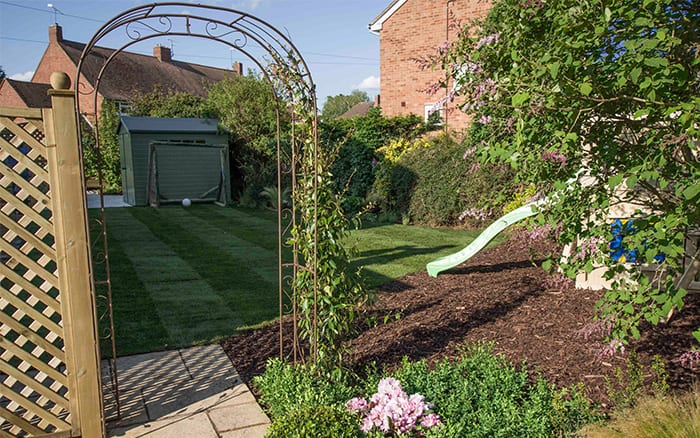It was another great show for series four – here’s what we learned this week.
1 Gardens aren’t just for children
It can feel like the kids’ play area is taking over the whole garden, but there are ways for the grown-ups to reclaim the space. If you have enough room, make two separate areas. This way you have your own space, but you can still keep an eye on the children.
If not, make their play area a feature! Choose fixed structures that fit in with the garden design – for example, choose wood that matches your fencing or garden furniture.
You can also hide it from view with some clever planting! Trees and evergreen shrubs can be used around the structures, or nail in a trellis panel and grow plants through it to act as a shield.
2 Awkward shapes can still work
People think that odd-shaped gardens are difficult to design, but the trick is to let the shape define the areas. Separate it across natural angles and break points to create different areas. Then use shapes within it, for example circles and curved beds to soften angular corners.
It’s also important to work out how the garden looks from each of the main viewing points. These include patios and seating areas, but don’t forget kitchen and bedroom windows too! Add in a few strong focal points and use plants to disguise any eyesores.
Read about how to get the look at home!
3 Anyone can create a perfect circle
Patio stones are nearly always square or rectangle, which means people build square or rectangular shapes. But you can make a circle with them! The trick is to use smaller blocks, which give you more flexibility.
In the show I used carpet stones, which are rows of blocks that have been linked together. You simply lay the ‘roll’ and cut it to shape! It saves so much time on placing individual stones, and helps keep your spacing regular too. Find out about the planting here.
4 Mixed planting is better
Flowering hedges look fantastic, but you don’t want a whole row of the same plants. Mixing the varieties means you have different types of interest all year round. Try combining evergreen shrubs with species that flower at different times.
Choosing shrubs that also offer berries mean you’ll get colour well into the winter season, plus birds will love you for it.
5 You can eat lilac flowers!
We’ve got Katie to thank for this little gem. Apparently they taste a little bitter and a bit like cucumber. Katie also recommends that you put some in a gin and tonic to add an extra flavour – now that’s my kind of gardening tip!



Leave a Reply